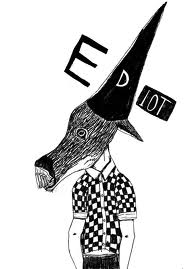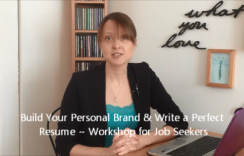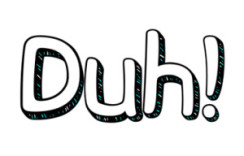“Oh, Look! Got a live one in the ‘net! (pun intended). Heave! Ho! Oh wait, it’s an ediot? Ah, well, won’t fetch much market value…dump it overboard…in 3-2-1!”
This is the last thing you want a recruiter or potential connection to think during their first impression of you on LinkedIn…especially given that over 97% of recruiters are on LinkedIn and over half of them use it exclusively to find candidates like you.
That’s why it’s crucial that you depict as consistent and connection-worthy a personal brand and impression of yourself on this powerful portal as possible, not only in your Profile itself, but in all your LinkedIn activity and interactions.
So, what makes an ediot and how can you avoid looking like one on LinkedIn?
An E-diot lacks the common sense, courtesy and/or etiquette that the rest of us intrinsically expect and take for granted in our professional interactions with others. And having been a recruiter and headhunter who has used (and still uses) LinkedIn quite extensively, I’ve witnessed varying degrees of ediocy, each with its own degree of credibility compromise/crush-potential.
Here are the top 3 that make me (and recruiters) cringe…
1) Treating LinkedIn like a dating website:
“Duh!” you say? Well, you’d be surprised. Over the past several months, I’ve received messages in my LinkedIn inbox stating the following (no joke):
“Hey there, you look so stunning. Can’t take my eyes off of you…”
“Hi, How are you? What’s goin on?”
or my favorite, the well thought-out and strategically expressed…
“Hi”
LESSON: LinkedIn is a PROFESSIONAL networking portal. Do not use it as your own personal dating site (Match, eHarmony, hello?) or as your source for social activities (um, it’s called Facebook?). Not only is this practice incredibly unethical and inappropriate, anyone who uses it as such is instantly branded as a “creep”, killing their credibility, and in my case, instantly banishing their attempted communication to my Trash folder and reported as SPAM.
2) Mis-representing your association in ‘Connection’ requests:
When you send a ‘Connection’ request to someone on LinkedIn to add them to your network, it asks you to choose the association by which you know the person. LinkedIn in fact gives you a number of options to choose, including: Colleague, Classmate, We’ve done business together, Friend, etc. Be sure you choose the accurate and proper association; this ensures your request gets the attention and response you desire.
LESSON: If you don’t know the person already, take heed, as this is where LinkedIn, out of concern for the privacy of its members, gets tricky. Do NOT click an improper association (i.e. “Friend” or “We’ve done business together”) if you are not a Friend or haven’t done business with them. Doing so not only indicates laziness, but it also ticks people off (including myself). If you do not actually know someone previously, your best bet is to find a common connection within your extended network on LinkedIn who can make an Introduction to that person on your behalf. Do the right thing by ‘taking the high road’ with as courteous and professional a first impression as possible.
3) Busting out a bad attitude in Groups and Discussion Boards:
Or as my dad sometimes says, “don’t be a negative nelly!”
LinkedIn Groups are places where you can directly converse and interact with people in niche communities on a variety of topics relevant to your career industry/field of interest and most importantly, LEARN and share. However, in a recent career group discussion about smart interview strategies, amidst many positive comments and conversation threads, I saw the following:
“This is useless and has never worked for me.”
“Complete waste of time.”
“Recruiters are all the same. They’re biased.”
LESSON #1: Would YOU want to hire this person, based on such an obviously reactive and negative nature? How would they act in a situation representing your company with a client if there was a difference of opinion? These are things that recruiters and potential employers look at when considering anyone as a potential candidate. It’s not just CAN you do the job, but HOW would you do the job?
LESSON #2: DON’T use Groups/Discussion boards as your own personal sounding board to bad-mouth others (directly or indirectly) or to express frustrations about your employment situation or lack thereof, etc. What you write is out there for ANYONE to see, especially if your name is attributed with it, which on LinkedIn, it is.
IN SUMMARY: Don’t be an ediot! Take special thought and care to craft a consistent and credible image for yourself on LinkedIn, which over time and with multiple impressions becomes the personal brand you impart upon the professional world at large (i.e. your in credible factor).
ACTION ITEM: These credibility crushers are just three of out several LinkedIn super secrets covered in my book “Headhunter LinkedIn Super Secrets Revealed: 21 Simple Steps to become Absolutely Irresistible to Employers.” Grab yours here.
Image ©2013 James Barker Illustration








